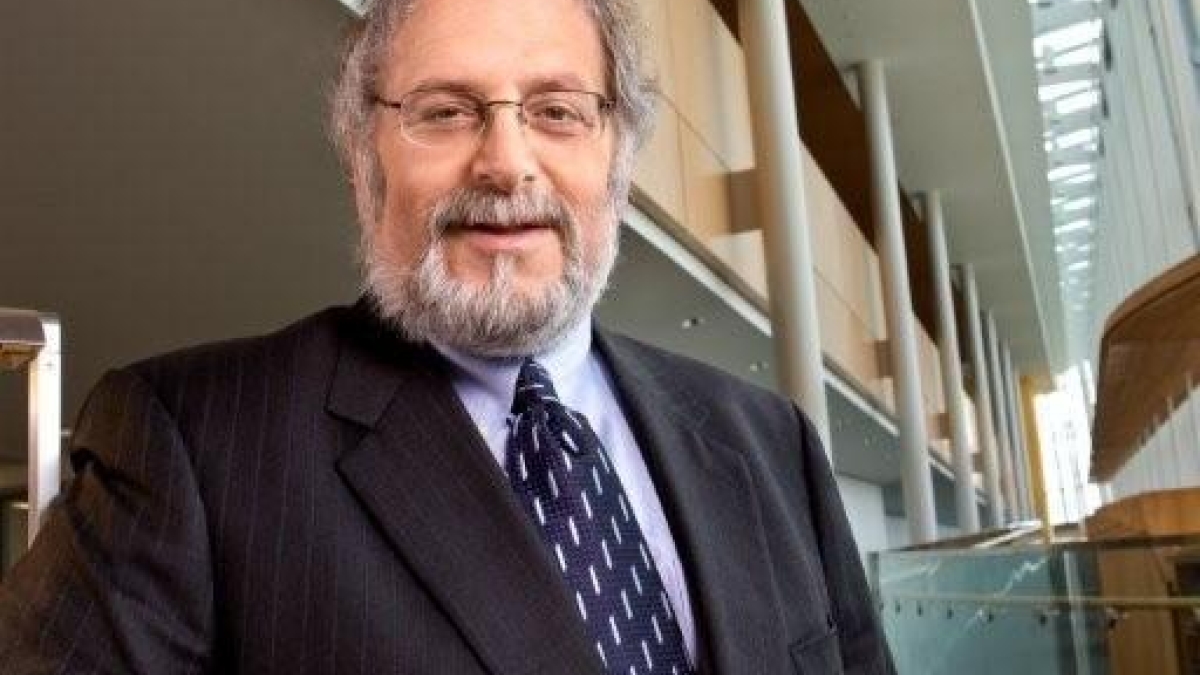Vice Provost Denis Simon joins US-China Innovation Dialogue

One of the most important components of the ongoing bilateral Strategic and Economic Dialogue between Washington and Beijing is the annual U.S.-China Innovation Dialogue. The impetus for the dialogue, which was formally launched in 2010, is the shared desire among leaders of both countries to address critical emerging issues arising from their growing interactions and interdependence regarding innovation, intellectual property and technology transfer matters.
As one of the world's top experts on Chinese research and development and innovation issues, Denis Simon, ASU vice provost for International Strategic Initiatives, has been visiting China and conducting research on science and technology policy issues for more than three decades. He was selected to be an original member of the U.S. experts group from the inception of the formal dialogue and was associated with two earlier bilateral meetings that formed the foundation for the establishment of the four-year-old official gathering on innovation issues. He is among six U.S. and six Chinese experts who work together as a cooperative team to analyze policy issues to support the implementation of the government-to-government dialogue.
"For me, many of the Chinese participants in the room during the Innovation Dialogue are old friends from the Ministry of Science and Technology, the Chinese Academy of Sciences and Chinese universities," Simon said. "We already have established a great deal of trust and mutual understanding. This often enables us to have frank exchanges about sensitive topics and to identify more easily where there is common ground for resolving seemingly intractable disagreements and problems.”
This year's dialogue was chaired by John Holdren, President Obama's Science Adviser, and Minister WAN Gang from China's Ministry of Science and Technology. Also in attendance were senior representatives from the U.S. Department of Commerce, U.S. Patent and Trademark Office, Office of the U.S. Trade Representative and the U.S. Department of State. They were matched with counterparts from China's Ministry of Finance, the State Intellectual Property Office, the National Development and Reform Commission, and the Ministry of Industry and Information Technology, as well as the Ministry of Science and Technology. Participants were also joined by several members of the private sector from both countries, including Microsoft, Qualcomm, CISCO and Cummins Engines.
“There is a strong need to have all of these people from different American and Chinese agencies involved because each of them is a stakeholder in the innovation domain. Each of their organizations has varied responsibilities that cover a key component or two of the innovation portfolio. If they are not all in the room at the same time, it is hard to reach real agreement or build a true consensus that has much meaning and sustainability. Both countries have large, complex bureaucracies and it is much more efficient to have these people in the same room together so we can make implementable decisions and take concrete actions without extensive delays."
This year's innovation dialogue covered a broad range of innovation-related issues, such as China trying to shift its economy away from its heavy emphasis on manufacturing and moving in the direction of creating a knowledge-driven economy.
“To achieve this end, it must reduce its heavy dependence on imported technology and generate new products and services using more ‘home-grown’ know-how. Some American companies, however, have alleged that extensive support for their own domestic firms by the Chinese government is a form of anti-market intervention that creates an uneven playing field. This frequently has led to tensions between the two governments regarding key issues, such as national treatment and compliance with the terms and conditions of China's membership in the World Trade Organization,” Simon said.
While some of the discussions can get technical regarding tax credits, patenting and competition, and investment policies, the overall tone and focus of the discussions tends to emphasize ways both countries can arrive at more mutually beneficial outcomes as their levels of economic engagement and technological collaboration increase.
"This fourth dialogue meeting was important because it sought to break new ground in two ways," Simon said. "First, there was a clear interest in identifying new models for extending bilateral cooperation in the innovation sphere. The Chinese government is clearly in favor of more joint research and sharing of know-how, especially in fields such as clean energy, biomedicines and agriculture technologies. And second, there was a strong interest in deepening cooperation around the problems of climate change because they are tied to so many other issues."
One aspect of this year's dialogue revolved around comments offered by Minister Wan Gang, who suggested that discussions of innovation inside the dialogue too often were focused largely on money, competitiveness and business, and not enough on societal benefits. He suggested that innovation for social good is part of China's own innovation agenda. For example, he highlighted the fact that the Chinese government is strongly committed to extending the average Chinese life expectancy from 74 to 75 years. While that may seem like a modest increase, just the opposite is the case. Given the fact that China has a population of 1.3 billion people, that would mean that there would be a 1.3 billion year increase across the life span of China's total population.
"1.3 billion years is a lot of additional years to feed, clothe, house, etc. the Chinese population! Accordingly, we need to find new innovative ways to improve the quality of life among the Chinese people," Wan said.